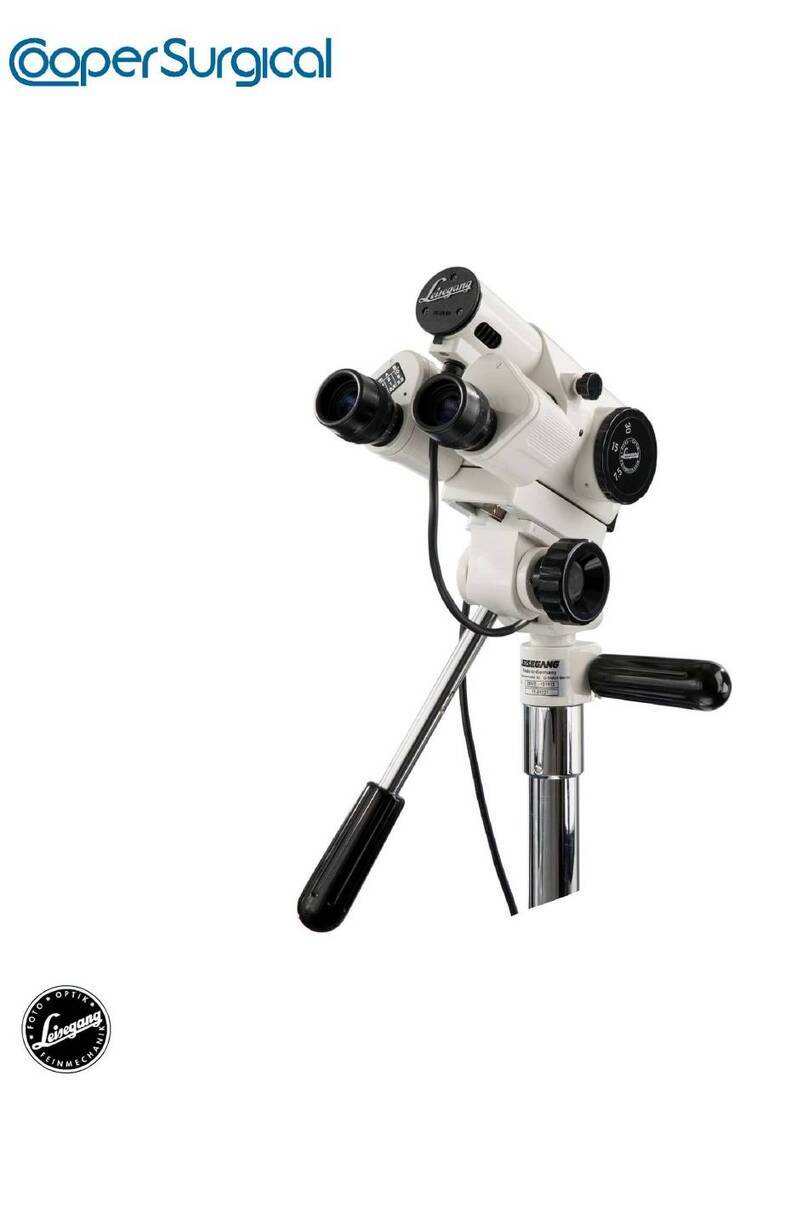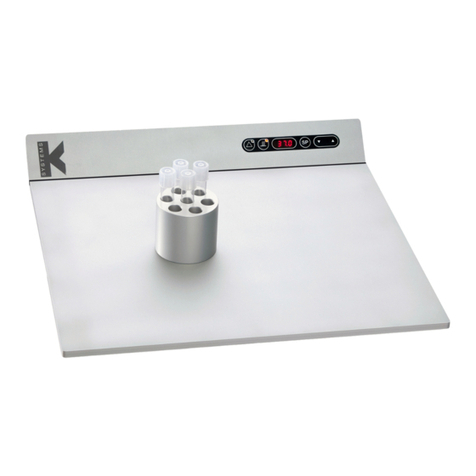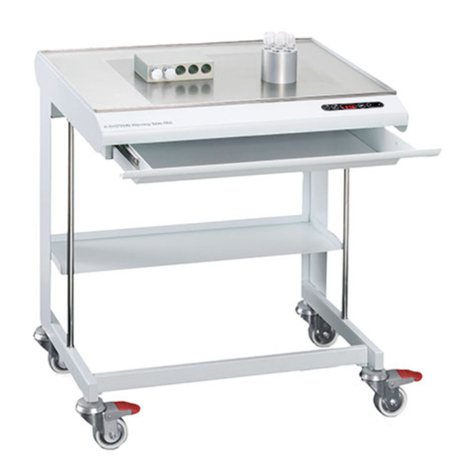
Integra 3™ Safety Warnings
Research Instruments Ltd
3
Secon 3
Integra 3™ Safety Warnings
Research Instruments Ltd
3
Secon 3
This equipment is deigned to be used by professionals in a laboratory environment
and conforms to IEC 60601-1-2 electromagnec compability for professional use,
however it is recommended that Portable RF communicaons equipment (such as
mobile phones, hand held mobile radios etc) should not be used within 30cm of this
device as it could interfere with the performance of the Integra 3.
Electrostac
discharge (ESD)
IEC 61000-4-2
± 6 kV contact
± 8 kV air
± 6 kV contact
± 8 kV air
Floors should be wood, concrete or ceramic
le. If oors are covered with synthec
material, the relave humidity should be at
least 30 %.
Electrical fast
transient/burst
IEC 61000-4-4
± 2 kV for power
supply lines
± 1 kV for input/
output lines
± 2 kV for
power supply
lines
± 1 kV for input/
output Lines
Mains power quality should be that of a
typical commercial or hospital environment.
Surge
IEC 61000-4-5
± 1 kV line(s) to
line(s)
± 2 kV line(s) to
earth
± 1 kV
dierenal
mode
± 2 kV common
mode
Mains power quality should be that of a
typical commercial or hospital environment.
Voltage
dips, short
interrupons
and voltage
variaons on
power supply
input lines
IEC 61000-4-11
<5 % UT
(>95 % dip in UT)
for 0.5 cycle
40 % UT
(60 % dip in UT)
for 5 cycles
70 % UT
(30 % dip in UT)
for 25 cycles
<5 % UT
(>95 % dip in UT)
for 5s
<5 % UT
(>95 % dip in
UT) for 0.5 cycle
40 % UT
(60 % dip in UT)
for 5 cycles
70 % UT
(30 % dip in UT)
for 25 cycles
<5 % UT
(>95 % dip in
UT)
for 5s
Mains power quality should be that
of a typical commercial or hospital
environment. If the user of the Integra 3
requires connued operaon during mains
power interrupons, it is recommended
that the Integra 3 be powered from an
uninterrupble power supply or a baery.
Power
frequency
(50/60 Hz)
magnec eld
IEC 61000-4-8
3.0 A/m 50/60Hz 3.0 A/m
50/60Hz
Power frequency magnec elds should
be at levels characterisc of a typical
locaon in a typical commercial or hospital
environment.
Conducted RF
IEC 61000-4-6
Radiated RF
IEC 61000-4-3
3 Vrms
150 kHz to 80
MHz
3 V/m
80 MHz to 2.5
GHz
3 Vrms
3 V/m
Portable and mobile RF
communicaons equipment
should be used no closer to any
part of the Integra 3, including
cables, than the recommended
separaon distance calculated
from the equaon applicable to
the frequency of the transmier.
Note 1: At 80 MHz and 800 MHz, the higher frequency range applies.
Note 2: These guidelines may not apply in all situaons. Electromagnec propagaon
is aected by absorpon and reecon from structures, objects and people.
Note 3: These guidelines may not apply in all situaons. Electromagnec propagaon
is aected by absorpon and reecon from structures, objects and people.
a Field strengths from xed transmiers, such as base staons for radio (cellular/
cordless), telephones and land mobile radios, amateur radio, AM and FM radio
broadcast and TV broadcast cannot be predicted theorecally with accuracy. To assess
the electromagnec environment due to xed RF transmiers, an electromagnec site
survey should be considered. If the measured eld strength in the locaon in which
the Integra 3 is used exceeds the applicable RF compliance level above, the Integra 3
should be observed to verify normal operaon. If abnormal performance is observed,
addional measures may be necessary, such as re-orienng or relocang the Integra 3.
b Over the frequency range 150 kHz to 80 MHz, eld strengths should be less than
[V 1 ] V/m.
where p is the maximum output
power rang of the transmier
in was (W) according to the
transmier manufacturer
and d is the recommended
separaon distance in metres
(m). Field strengths from xed
RF transmiers, as determined
by an electromagnec site
survey a, should be less than
the compliance level in each
frequency rangeb.
Interference may occur in the
vicinity of equipment marked with
the following symbol:
80MHz to 800MHz
800MHz to 2.5GHz
d = [3.5/V1] √p
d = [3.5/V1] √p
d = [3.5/V1] √p
UT is the a.c. mains voltage prior to applicaon of the test level.

































